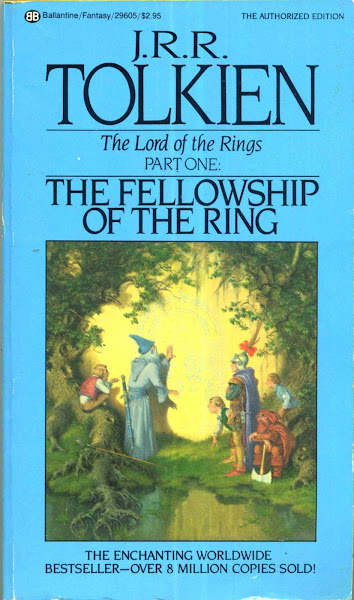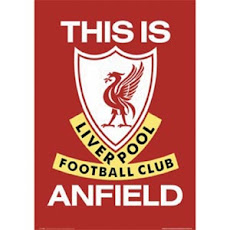(In following the events in Philippine football the past three years I've conducted extensive interviews with the people working behind the scenes and have hundreds of facsimiles of documents that have beset the state of the game. What follows is the second installment of a five-part report.)
http://businessmirror.com.ph/index.php?option=com_content&view=article&id=6526:national-team-national-problem&catid=31:sports&Itemid=65
http://businessmirror.com.ph/index.php?option=com_content&view=article&id=6589:foreign-flavor-for-local-team&catid=31:sports&Itemid=65
Part Two: National Team. National Problem.http://businessmirror.com.ph/index.php?option=com_content&view=article&id=6526:national-team-national-problem&catid=31:sports&Itemid=65
http://businessmirror.com.ph/index.php?option=com_content&view=article&id=6589:foreign-flavor-for-local-team&catid=31:sports&Itemid=65
by rick olivares
After a successful campaign in the 2007 ASEAN Football Championship-Qualifying Round in Panaad, Bacolod, eight members of the Philippine Men’s Football Team went straight from the airport to the hastily organized press conference held at the penthouse of the Mizuno Headquarters at the BMG Centre at the Paseo de Magallanes Commercial Center, Makati City. Since it was close to Christmas time, the other members of the squad were allowed to go home to their respective provinces.
Of the players present, six of them were Fil-foreigners. The only locals were goalkeeper Louie Casas and defender Japeth Sablon.
The press conference was a snafu. There were only seven writers on hand and only one television crew present – Solar Sports, which broadcast the entire tournament live on its cable channel; an unprecedented feat for Philippine football.
There were no press kits handed out during the press conference. Not even nameplates to introduce the players who were largely unknown to the media. The question and answer portion was another unmitigated disaster. The sports writers asked an assortment of insipid questions like “what was their favorite color” all the way to their “favorite Filipino food.”
And it was over in 20 minutes.
It was actually a telling of the state of football in the country. Aside from one reporter who asked football-related questions, most were more akin to a slum book-type or in this day, for facebook. Truly the sport was nowhere near the rarefied air accorded to basketball and its men’s national team whose fortunes would affect the country’s mood in a way only a Manny Pacquiao fight can.
Most of the talking was done by the jovial Chris Greatwich, the former Brighton and Hove Albion player who was on his third tour of duty with the national team. The Younghusband brothers, Phil and James, who were youth team players for Chelsea in the English Premier League, contributed their fair share of answers while Casas and Sablon were the relegated to token questions such as “how was it to play with the Fil-British?” and “what is the future of Philippine football?”
In a separate interview three days later at the Erenchun Field of Ateneo De Manila for an Ang Liga match, the two teammates from San Beda College casually mentioned the dissent among the other homegrown players that stemmed from the proliferation of the reinforcements from Europe and the United States.
The addition of foreigners to beef up the national team is nothing new. In its earliest days, the great Paulino Alcantara alternated between FC Barcelona and tours of duty with the Spanish and Philippine National Teams.
But it was during the tenure of Andres Soriano Jr. that the infusion of foreign technology and know-how to a moribund football scene. Soriano and his General Secretary Fernando Alvarez first brought in British coaches and Spanish nationals to beef up national team. His gambit was to bring back the excitement of football that was fast giving way to basketball as the national sport.
It was of course a vastly different time when migration, naturalization, and the global village were subject to different laws. Nowadays, it seems almost every national squad save for the Philippines has their own cadre of naturalized players, dual citizens or Brazilians to make them more competitive.
The Spanish contingent that was brought in was notable for it included a former player for Atletico Madrid who would later trade in his boots for a doctor’s garb -- Dr. Juan Cutillas. It was Cutillas who later recruited Tomas Lozano, Manuel Cuenca, Julio Roxas, and Juan Gutierrez to play in the country.
With financial muscle provided by the Sorianos, Elizaldes, Rochas, and Hagedorns among others, the Philippine selection – the four Spaniards together with Armed Forces and top collegiate players – beat some of the best teams in the region including Thailand, Singapore, Burma, and South Korea. It seemed that football was on its way up as a major sport. There were several semi-pro football leagues going on and some played to packed crowds at the old Ugarte Field in Makati.
As the pro Philippine Basketball Association grew in stature, the crowds that trooped to watch football games began to dwindle. The support eventually died down and the leagues folded or consolidated into a few. Roxas and Gutierrez went back home to Spain while Lozano and Cuenca stayed and grew roots in the country.
The national team, the bulwark of the state of the game in the country, floundered and it would take more than three decades before the team shook off the stigma of repeated pummelings on the international stage.
The concept of rebuilding a national team this time with reinforcements of Filipino ancestry was began during the time of PFF President Rene Adad and its General Secretary, the late Christopher Monfort. With the Spanish players having moved on to club competition and the decline of the popularity of football, the national team was primarily stocked with players from the Armed Forces because it was with the military squads where one could continue their career after their collegiate days were over.
Cutillas, who holds a Spanish and Australian passport but married a Filipina, was invited back to oversee creation of a competitive the national team. Together with Juan Miguel Romualdez, the chief proponent for the Kasibulan (grassroots) development, they pushed for the inclusion of a larger but limited number of players of Philippine ancestry without compromising the home grown players. Monfort at the same time, introduced a micro version of that in the Ateneo Football Center and its benefits on the pitch were later hailed in the Vision Asia report.
Cutillas defended the move: “These Fil-foreigners were there to not only add expertise but to help in the transfer of technology. But football officials have to be careful that it does not harm the grassroots program because continued dependence on the Filipino-foreigners will not help local football. ”
Domeka Garamendi, who served as Gen-Sec during Romualdez’ tenure as PFF President elaborated that point: “The internal problem is the fact that most of the Fil-foreigners arrive around a week or two days before the competition and that they were selected in place of local players who have been in the team longer. I know this doesn’t sound quite fair but given the unique situation back then these Fil-fors performed better than some of the local players during training camp. And it wasn’t like they didn’t want to come earlier; it was because they couldn’t due to club/team/school commitments. The coaching staff should explain this to the players and made them understand that practicing and attending the training camp are not sure-fire ways of getting into the team. It’s part of it but performance also plays an integral role. And not all the Fil-fors that have tried out made the team. There were several that the coaching staff did not take because there are better local players.”
Cutillas, Romualdez, and Garamendi all agree that the Fil-foreigners are part of the short and medium terms solutions. What is paramount is to create an environment that will nurture and develop local talents to be at par with Fil-fors.
Summed up Garamendi, “We can only blame ourselves for not being able to keep up.”
Ariston Caslib, who was national coach from 2003 to 2007, insisted that Fil-foreigners submit themselves anywhere from two weeks to a month for testing and inspection before they were included in the team roster. Said Caslib, “A national coach must challenge local players to lift the levels of their game. If we constantly go up against the best and are tested by the best, then only then can we raise the level of our game.”
It was during this period when the Azkals, as the national team is nicknamed, vaulted from a low #195 in the FIFA rankings to its all-time high at #157 (the Philippines is currently at #164).
However, it is curious to note that after every major competition, the national team is disbanded and only put back together sometimes perilously close to an important international competition. Why the team is disbanded isn’t clear and it deprives its players of the allowances provided by the Philippine Sports Commission.
With the AFC Challenge Cup Qualifiers fast approaching (April 14-18, 2009 in the Maldives where the Philippines is bracketed with the host country, Bhutan, and Turkmenistan), the national team hasn’t even been called in for training.
The recent resignation of Cutillas as Head Coach of the National Team and Head of the Technical Committee over a row with current PFF President Jose Mari Martinez regarding the non-payment of coaches as well as the interference of team managers in the duties of other national team coaches has also thrown exacerbated the situation.
Regarding the latter complaint, Cutillas was referring to reports by coaches Casper Ngo, Joel Villarin, and Lloyd Lim over Team Manager Ernie Nierras usurping their authority and relegating them to the bench during tournaments in Malaysia (2009 AFC Under-19 Women’s Championship Qualification from October 28-November 7, 2008 and the 2009 AFC Under-16 Women’s Championship Qualification from November 10-18, 2008) and Vietnam (2009 AFC Senior Women’s Championship Qualification from October 1-13, 2008).
“Mahirap ‘to,” said one player who requested anonymity for fear of sanctions and non-inclusion with the squad. “Papalit palit ng coach. Paiba iba ng sistema. Tapos sisihin kami sa laro.”
Then there are the Younghusbands who have gone on record to say that they refuse to play anymore for the team as long as Martinez is PFF President. Joyce Ramirez who represents the Fil-British brothers said that this stemmed over unfulfilled promises over expenses incurred during their last national stint. Said Ramirez, “He (Martinez) told us to pay first for our own airfare and other expenses after which he would reimburse us after. When we tried to hold him to his commitment, he said he made no such promises.”
When this writer asked Martinez for his side regarding the coaches and Younghusbands’ cases, he declined to comment. But for the National Team, he said, “We will have a team ready. And I have a back-up. This is what I call my baby. There’s this team of Filipino-British footballers called Philippine United and they’re based in England.”
“All I can tell you is that under my watch, we’d had continued success in the international field. And we will address those concerns and compete.”









No comments:
Post a Comment